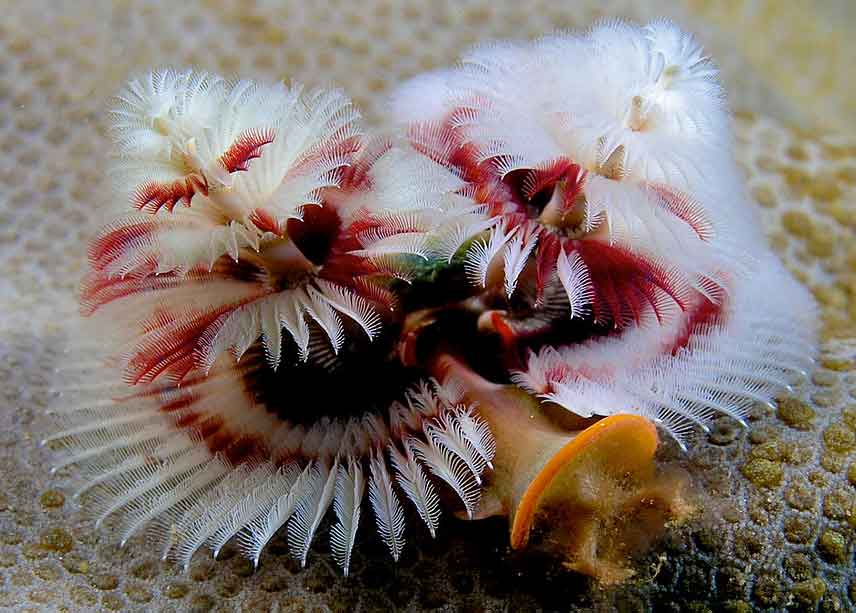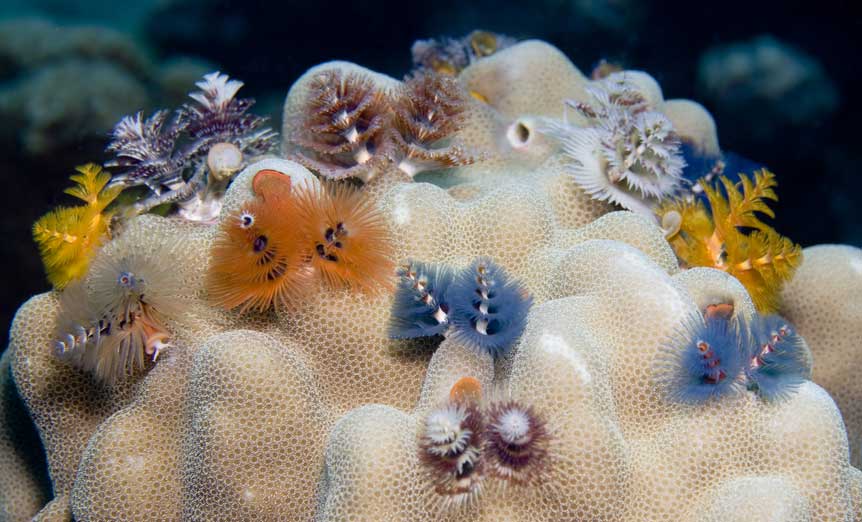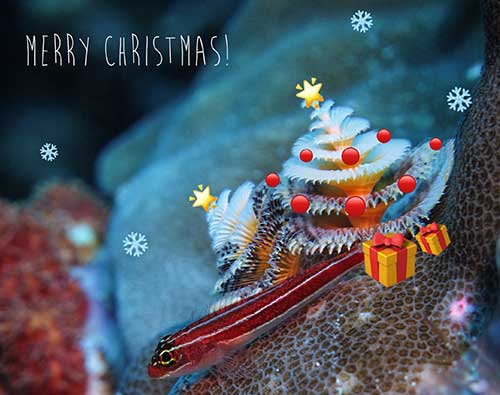There’s Christmas in the Ocean
Don’t you love this time of the year?
Outside temperatures are above 30 C, warm showers occasionally competing with the melting sun, quiet streets and silent oceans. Oh, and before we go to an empty dive site….why don’t we pick a delicious mango from one of the countless trees nearby.
You know what time it is? it’s Christmas time in Nusa Lembongan baby!
In this month’s special holiday blog we will answer questions from our frequent flyer, long time subscribers and our biggest fan. Please welcome, Little Timmy.
Ok Little Timmy, tell us your question?
“Mr. Siren Diving, what is the most Christmassy creature in the ocean, what does it do and where can I find it?”
Good question, Little Timmy.
Without a doubt it has to be the Christmas Tree Worm. For every diver who has laid their eyes on a tropical coral reef, these little fellas are no stranger. Here, right in the heart of Indonesia we can find a great variety of them on literally all the dive sites around the Nusa Islands (Lembongan, Ceningan and Penida).

Global Worming
Now I know what you’re thinking… What in the name of Santas pyjamas am I looking at? I must admit that it doesn’t look much like a worm, rather a flamboyant brush for the world’s smallest toilet.
Well, let me start off with its binomial name, Spirobranchus giganteus… I know, fancy.
“Spiro” meaning “spiral“, which to be honest is not a big surprise. “branchus” meaning “gills“… You know, like the “nudibranchs” we keep going on about, and finally, we have the word “giganteus“, which really couldn’t be more obvious.
So, we’re dealing with a worm whose most distinctive features are big spiralling gills.
“So, the Christmas tree-like structure is actually for breathing?”
That’s right, Little Timmy. Every worm has two of them and they are also referred to as “crowns.”
“But Mr. Siren Diving… how does the worm eat?”
You’re full of questions today little Timmy aren’t you?
At the same time their crowns are also a highly developed exterior extension of their mouth. Basically, like a really long tongue. Every crown consists of a spiral with feather-like tentacles. Having lots and lots of small hairs or cilia attached to them allows water filtration and transportation of micro-organisms to the worms’ mouth. Since this colourful structure is very fragile it also has sensitive receptors that make the crowns retract in a split second if they are at risk of being damaged or eaten.
The worm that turned
“So that’s why the crowns disappear when I get to close. They retract for protection?”
That’s right, Little Timmy.
“But Mr. Siren Diving… if the Christmas tree like structure is just for breathing and feeding, where is the rest of the worm?”
Another excellent question, little Timmy.
You see, Christmas Tree Worms can’t live out in the open because they have no appendages for movement or propulsion. They would be a very easy prey for a number of predators. First, they choose a brain coral or maybe porites and drill a tiny hole in it. Then, they secrete a calcareous tube around their body to keep the hole open as well as for additional protection.
And have you noticed this trumpet-like thing between the crowns. It’s called the operculum. When the crowns are retracted, it closes the tube like a lid. Sand and predator proof… job done.

“But Mr. Siren Diving…what…”
“Exactly, Little Timmy! Brain corals and Porites are so called stony corals which can have enormous coral heads carrying hundreds of Christmas Tree Worms at the same time.
Also, have you ever wondered how Christmas Tree Worms make love? Well, they don’t! They secrete their eggs or spermatocytes directly into the ocean currents where they are randomly fertilized with the hope to settle down on other Porites possibly hundreds of kilometers away. And that’s why we can find them on tropical dive sites all around the world. From the Caribbean to the Indo-Pacific. Isn’t that fascinating? A true aquatic jet-setter!
“But Mr. Siren Diving… in modern times of over fishing, global pollution, climate change and economic egocentrism wouldn’t it be arguable, that Christmas Tree Worms are at great risk of continuous decline possibly triggering an oceano-ecological disaster?”
“Ermmm……… Unfortunately, we are running out of time and will have to leave the answer to this question open. But, please stay tuned for more updates with our Siren Diving Lembongan blog. I hope you enjoyed our holiday special.
Next time on the Siren Diving Blog, we will be interviewing Ebenezer Scrooge who claims he was visited by three ghost pipe fishes on his last night dive before Christmas.
Until then…
A Merry Christmas and a Happy New Year!
from all of us at Siren Diving Lembongan. 🙂

